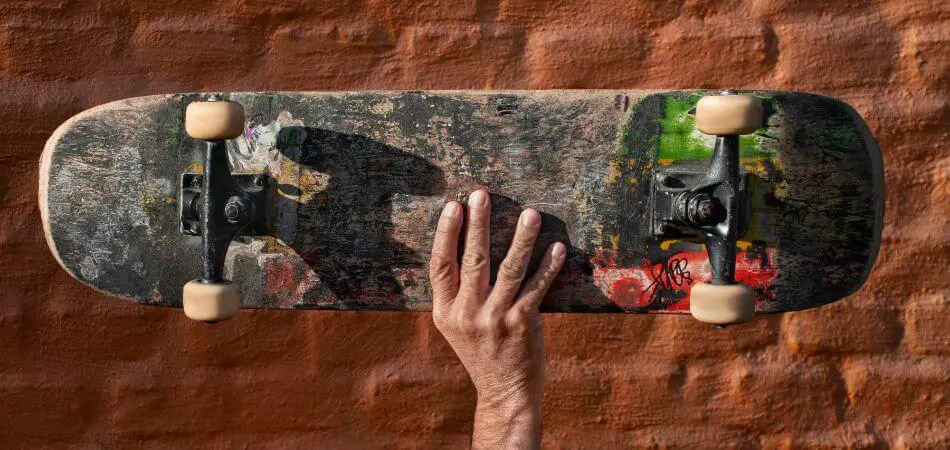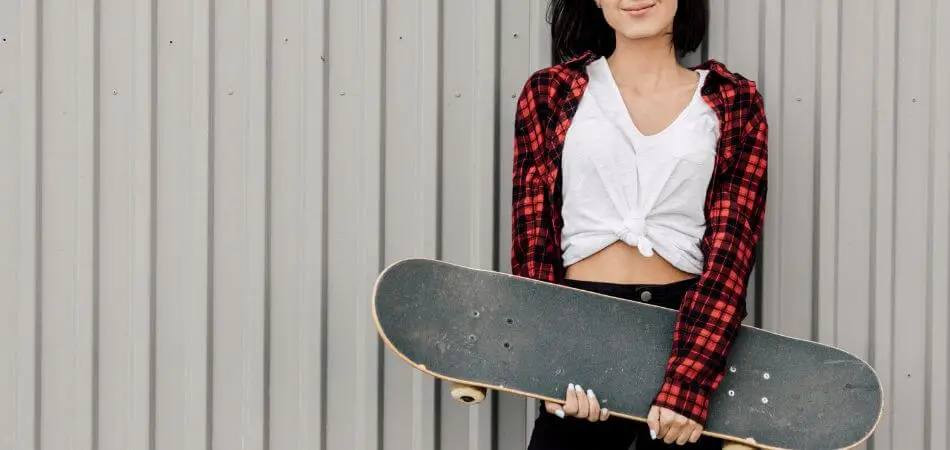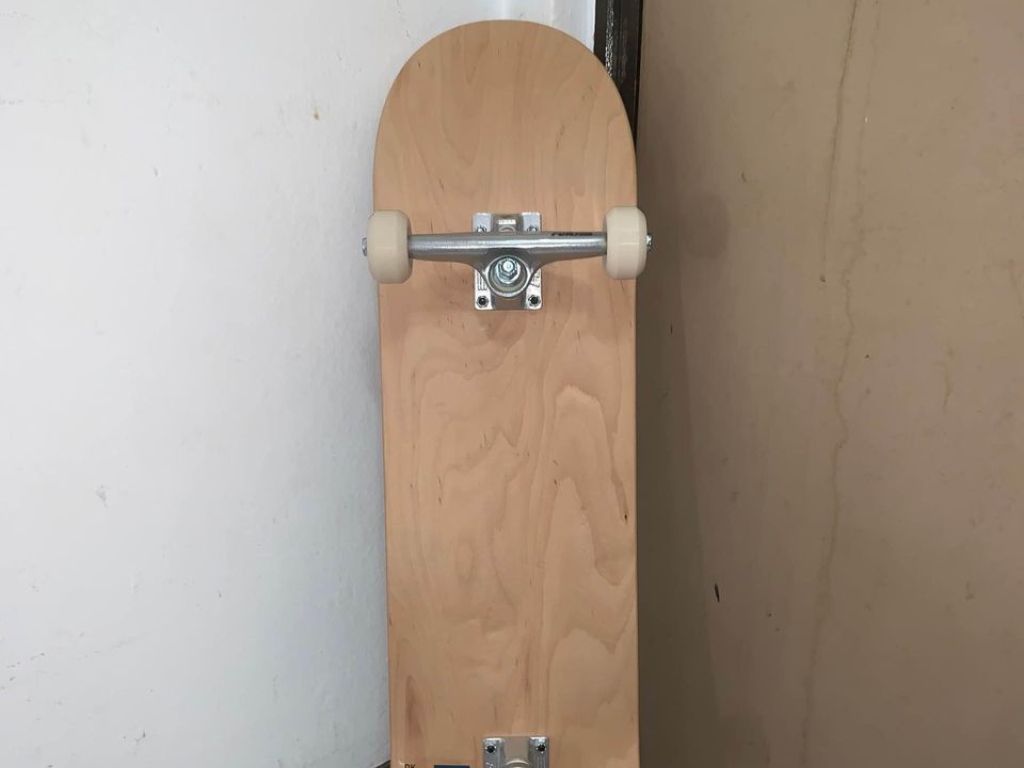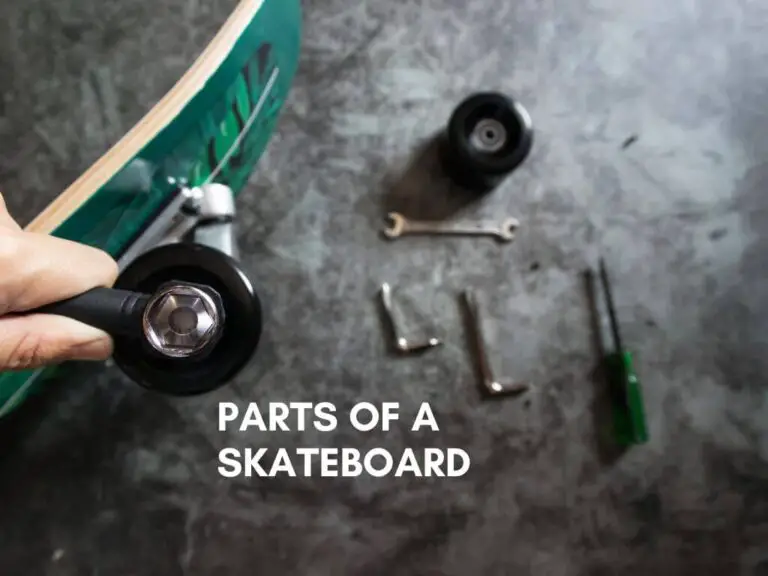When it comes to skateboarding, the right deck size can make all the difference in your performance, comfort, and style. If you’re searching for the ultimate balance between stability and maneuverability, look no further than the 8.25 skateboard dimensions. This versatile width has become a favorite among skaters of all levels, offering the ideal middle ground for street tricks, park riding, and cruising. But what makes the 8.25 skateboard so special, and why is it gaining so much popularity?
In this article, we’ll dive into the benefits of 8.25 skateboard dimensions, who they’re best suited for, and how they can elevate your skateboarding experience. Whether you’re a seasoned pro or just starting out, understanding the power of this deck size could be the key to unlocking your best ride yet.
Understanding the 8.25″ Skateboard Deck
When considering the purchase of a skateboard, the deck width plays a crucial role in determining the board’s suitability for different styles of skating. The 8.25-inch skateboard deck is particularly notable for its versatility, making it a preferred choice among both street and technical skaters. This section explores the characteristics and benefits of the 8.25-inch skateboard deck.
Deck Dimensions and Shape
The 8.25-inch deck typically measures between 31 and 32 inches in length, which provides a stable platform without compromising on maneuverability. This size is complemented by a medium depth concave that enhances the ability to perform tricks and maintain control during rides. The classic popsicle shape of the deck, recognized for its symmetrical design, is ideal for executing a variety of tricks in both street and park skating scenarios.
Material and Build
Traditionally, skateboard decks are crafted from maple wood due to its robustness and flexibility, essential for enduring the impacts of skateboarding. However, alternatives like carbon fiber and bamboo are also employed to offer lighter or more sustainable options without sacrificing strength. These materials are chosen to support the dynamic needs of skaters, ensuring longevity and performance.
Wheelbase and Maneuverability
An essential aspect of the 8.25-inch skateboard is its wheelbase—the distance between the inner mounting holes of the trucks—which typically measures around 14.25 inches. This dimension is crucial as it affects the turning radius and overall stability of the skateboard. A shorter wheelbase allows for quicker turns, which is beneficial in street skating where agility and the ability to perform quick maneuvers are paramount.
Versatility Across Skating Styles
The width of the 8.25-inch deck strikes a perfect balance between grip, control, and maneuverability, making it a versatile choice for various skating disciplines. Whether it’s cruising through the streets, performing technical tricks, or transitioning in skate parks, the 8.25-inch skateboard accommodates a broad range of skating styles. This adaptability makes it an excellent option for skaters who enjoy a mix of skating environments.
Skater Preferences
Many skaters opt for an 8.25-inch deck due to its ability to facilitate easier flips and pops, essential for street and technical skating. The balance it offers between a compact form and sufficient surface area also makes it easier to spin, appealing to skaters who prioritize agility and speed in their routines.
By understanding these key aspects of the 8.25-inch skateboard deck, skaters can make informed decisions that align with their skating style and preferences, ensuring they choose a board that best suits their needs.

Comparing 8.25″ to Other Popular Sizes
When selecting a skateboard, the width of the deck is a pivotal factor that influences both performance and comfort. The 8.25-inch skateboard deck is a popular choice for its versatility, but how does it compare to other common sizes? Understanding these differences can help skaters choose the deck that best suits their style and needs.
Skateboard Deck Widths and Their Uses
- Narrow Decks (6.5 – 7.50 inches):
- Ideal for youth riders and smaller adults.
- Preferred for technical street skating due to easier flip and maneuverability.
- Medium Decks (7.50 – 8.00 inches):
- Suitable for teen and adult riders engaging in street skating and technical tricks.
- Offers a balance between stability and agility, making it a common choice for regular street skaters.
- Versatile Decks (8.00 – 8.50 inches):
- This range includes the 8.25-inch deck, known for its adaptability across different skating styles.
- Good for skaters who frequent both street and transition environments like parks and pools.
- Wide Decks (8.50 inches and up):
- These decks provide increased stability and surface area, making them ideal for transition skating, bigger street tricks, and cruising.
- Better suited for skaters who perform in pools or want a more substantial deck underfoot for large gaps and handrails.
Impact of Deck Size on Performance
- Smaller Boards (7.75 inches and below):
- Known for their lightweight and rapid flipping capabilities, these boards are perfect for skaters who prioritize precision and advanced flip tricks.
- They require more precise control, which can be challenging for beginners.
- Larger Boards (8.38 inches and above):
- Offer more room to land, which can be advantageous for learning new tricks or for skaters with larger feet.
- While they provide more stability, their increased weight might reduce the ease of performing quick flips.
Skater Preferences and Physical Attributes
- Body Size and Shoe Size:
- Smaller boards are often recommended for individuals with smaller shoe sizes as they allow better control and maneuverability.
- Larger boards fit well with larger shoe sizes, providing a more stable platform for various tricks and transitions.
- Riding Style and Terrain:
- Skaters who prefer parks, ramps, or pools might opt for wider decks that offer better control during high-speed maneuvers and transitions.
- Street skaters might choose narrower decks for better handling during technical tricks and flips.
Personal Preference and Progression
Choosing the right skateboard width often comes down to personal preference and the specific skating style one wishes to pursue. While beginners might benefit from a wider deck for stability, more experienced skaters might choose narrower or specific-sized decks based on the tricks they perform and their comfort with the board.
In conclusion, the 8.25-inch skateboard deck stands out as a versatile choice suitable for a wide range of skating styles, offering a balanced blend of stability and maneuverability. Whether transitioning from smaller to larger decks or vice versa, skaters should consider how deck size impacts their preferred skating style and comfort level.
Choosing the Right Skateboard Width
Selecting the ideal skateboard width is crucial for optimizing performance and comfort. This decision is influenced by several personal factors, including riding style, body dimensions, and shoe size. Here’s a breakdown of how to choose the right skateboard width tailored to individual needs:
Factors to Consider
- Riding Style & Terrain:
- Transition Skating (parks, pools): Opt for wider decks (8.00″ to 8.50″ or wider) to enhance stability during high-speed maneuvers.
- Street Skating (flip tricks, technical terrain): Choose narrower decks (up to 7.50″) for better control and lighter weight setups.
- Body Height & Weight:
- Smaller riders (children or shorter adults): Smaller boards are easier to handle and maneuver.
- Taller or heavier adults: Larger boards provide a more stable platform, accommodating greater weight and height.
- Shoe Size:
- Smaller shoe sizes (US men 3-6, US women 4.5-7.5): Boards ranging from 7.375″ to 8.0″ in width are typically sufficient.
- Larger shoe sizes (US men 9.5 and up, US women 11 and up): Consider boards that are 8.0″ wide or larger to ensure a good fit and adequate support for feet.
Recommended Deck Widths by Skater Profile
- Youth Riders (under 6 years old or shorter than 3’5″): Prefer micro boards between 6.5-7.375 inches wide.
- Young Skaters (aged 6-12 or height between 3’5″-5’2″): Suitable boards measure between 7.375-8.0 inches wide.
- Teen and Adult Skaters (aged 13 or over, taller than 5’3″): Boards between 8.0-8.25 inches wide are ideal.
- Adult Skaters: Generally, a minimum of 8.0 inches wide is recommended.
Deck Width and Skating Style
- Narrow Decks (6.5-7.50 inches):
- Best for younger, smaller skaters due to easier maneuverability and lighter weight, which aids in performing technical tricks and flips.
- Medium Width Decks (7.50-8.00 inches):
- A versatile choice for both teens and adults, suitable for street skating and technical tricks, offering a balance of stability and agility.
- Wider Decks (8.25 inches and up):
- Ideal for skaters engaging in transition skating like pools and ramps or those who prefer cruising, providing increased stability and a smoother ride at higher speeds.
Trying Out Different Sizes
It’s advisable for skaters to visit skate shops and try different board sizes. This hands-on approach allows individuals to feel how the board suits their body size and skating style. Testing various widths can significantly impact the decision-making process, as personal comfort and control over the skateboard are paramount.
By considering these factors and recommendations, skaters can make informed choices about the skateboard width that best suits their needs, enhancing their overall skating experience.
Benefits of an 8.25″ Skateboard for Different Skating Styles
An 8.25-inch skateboard deck offers a plethora of advantages across various skating styles, making it a popular choice for skaters with diverse preferences and skill levels. Here, we explore how this size benefits different aspects of skateboarding:
Versatility in Street Skating and Skate Parks
The 8.25-inch skateboard is highly regarded for its versatility. It performs exceptionally well in street skating scenarios as well as in skate parks. This size provides a solid balance, enabling skaters to execute a variety of tricks with greater confidence. Whether it’s navigating through complex street courses or tackling the dynamic environments of skate parks, the 8.25-inch deck handles it all with ease.
Ideal for Taller and Heavier Skaters
Skaters who are taller or have a heavier build find the 8.25-inch skateboard more accommodating. The additional width offers a larger surface area, making it easier for skaters with larger feet to maintain balance and control during tricks. This size supports a more comfortable ride, ensuring that skaters can enjoy prolonged sessions without compromising on performance.
Enhanced Stability for Transition Skating
Transition skating, which includes activities like speeding in pools, vert, or skatepark transitions, demands a board that can provide stability at high speeds. The 8.25-inch skateboard meets this requirement perfectly. Its wider base helps maintain stability, which is crucial for skaters who prefer riding in these high-adrenaline environments.
Suitable for Technical Tricks
Despite its wider width, the 8.25-inch skateboard still allows for the execution of flip tricks, though it requires a bit more effort compared to narrower boards. This makes it a suitable option for skaters who engage in technical skating but do not want to sacrifice the ability to perform complex tricks. The board’s stability and surface area contribute to a higher success rate in landing these tricks.
Deck Shape and Skating Style Compatibility
Different shapes of skateboard decks cater to various skating styles, and the 8.25-inch deck is no exception. The classic popsicle shape of this deck size is perfect for both street and park skating. It provides a symmetrical platform that aids in performing tricks uniformly in all directions, which is a significant advantage for skaters who frequent both environments.
Preference Among Skaters for Various Terrains
Skaters who frequent pools, ramps, or prefer transition skating often opt for boards that are 8.25 inches wide or larger. This preference stems from the need for greater stability and control during high-speed maneuvers and transitions. Similarly, street skateboarders who tackle large gaps and handrails benefit from the added width, which provides a solid foundation for landing safely and effectively.
By choosing an 8.25-inch skateboard, skaters can enjoy a blend of stability, control, and versatility, making it an excellent choice for a wide array of skating disciplines. Whether cruising through city streets or performing high-energy tricks in skate parks, this board size accommodates an extensive range of activities, catering to the needs of diverse skaters.

Skateboard Length and Wheelbase
Understanding the dimensions of a skateboard, particularly the length and wheelbase, is crucial for both beginners and experienced skaters. The wheelbase, which is the distance between the center of the front and back bolts of the skateboard deck, plays a significant role in the board’s performance. Here’s how these dimensions affect the skating experience:
Wheelbase: The Pivot of Skateboard Dynamics
The wheelbase is a key factor in determining how a skateboard will handle during use. Here are some specific ways in which the wheelbase influences a skateboard’s performance:
- Responsiveness: A shorter wheelbase, around 14 inches, makes the skateboard more responsive. The front of the board feels lighter, allowing for quicker turns and maneuvers. This setup is ideal for street skating where agility is crucial.
- Stability and Pop: On the other hand, a longer wheelbase, such as 14.75 inches, provides more stability and a higher pop, which is beneficial for performing tricks that require a strong lift off the ground. However, this may slightly reduce the board’s responsiveness.
- Turning Behavior: The length of the wheelbase directly impacts how the skateboard turns. Shorter wheelbases allow for sharper, more abrupt turns, while longer wheelbases offer smoother, more gradual turning, which is preferable for high-speed skating or transitions.
- Energy and Pop Dynamics: The effort required to perform an ollie or other tricks where the board needs to leave the ground varies with wheelbase length. Shorter wheelbases require less energy for the initial pop but might not provide as much lift. Conversely, longer wheelbases need more force but achieve greater heights.
Skateboard Length: Minimal Impact with Varied Preferences
While the width and wheelbase of a skateboard are often highlighted for their impact on performance, the length of the skateboard also plays a role, albeit a lesser one. Here are some considerations regarding skateboard length:
- Standard Measurements: Most street skateboards vary in length from 28 to 33 inches. The choice of length usually aligns with the skater’s preference and the style of skating they pursue.
- Younger Skaters: Shorter boards are generally recommended for younger or shorter skaters as they are easier to manage and control.
- Deck Size Variations: The length of the deck often correlates with its width. For example, a deck width of 8.25 inches typically has a length of about 32 inches. These dimensions provide a balanced platform suitable for various skating styles.
Adjusting the Wheelbase
Skaters can modify the wheelbase to suit their skating style or comfort:
- Truck Positioning: Adjusting the position of the trucks by using different mounting holes or adding riser pads can change the wheelbase. This adjustment allows skaters to experiment with different setups to find what works best for them.
- Bushings and Wheelbase: The tightness of the bushings can also influence the feel of the wheelbase, although this effect might be subtle and less noticeable to casual skaters.
By understanding these aspects of skateboard length and wheelbase, skaters can better tailor their equipment to their personal needs and preferences, enhancing both performance and enjoyment.
Deck Material and Build Quality
Skateboard decks are meticulously crafted to balance durability with performance, utilizing materials and construction techniques that enhance their functionality and longevity. Let’s delve into the specifics of these materials and methods to understand what makes a quality skateboard deck.
Materials Used in Skateboard Decks
- Maple Wood: The most common material for skateboard decks is Canadian maple, known for its robustness and ability to withstand the impacts of skateboarding. This wood is preferred due to its dense and fibrous nature, making it ideal for the wear and tear of skate tricks.
- Bamboo and Birch: Alternative materials like bamboo and birch offer unique properties. Bamboo is eco-friendly and provides a lighter, more flexible deck, whereas birch is dense and strong, offering a slightly more dampened feel than maple.
- Composite Materials: Some decks incorporate materials such as carbon fiber, fiberglass, and Kevlar. These composites contribute to the deck’s strength and durability while keeping it lightweight, which is particularly beneficial for professional skaters.
Construction of Skateboard Decks
- Layering: Traditional skateboard decks are made from 7 to 9 layers of thinly sliced veneer, glued
Setting Up Your 8.25″ Skateboard
Setting up your 8.25″ skateboard involves a series of steps that ensure the board is tailored to your skating style and preferences. Here’s a detailed guide on how to get your skateboard ready for action.
Gather Necessary Equipment
Before you start assembling your skateboard, make sure you have all the necessary components:
- An 8.25 inch skateboard deck
- Trucks that closely match the deck width (preferably within 0.25 inches)
- Wheels and bearings
- Skate hardware including screws and nuts
- Grip tape
- Tools such as a skate tool or socket wrench, and a Philips head screwdriver
Step-by-Step Assembly Process
- Install Grip Tape:
- Begin by applying the grip tape to the top of the deck. Ensure it covers the entire surface smoothly without any bubbles.
- Attach Trucks:
- Align the trucks with the holes on the deck. It’s crucial to use trucks like the Indy 144, which are known for their performance and are already being used satisfactorily by many skaters.
- Install Bearings and Wheels:
- Insert the bearings into the wheels. Bronson G3s are recommended as they are known for their durability. Attach the wheels to the trucks.
- Tighten Hardware:
- Secure the trucks to the deck using screws. It’s advised to use eight deck screws with threading that extends to the top for a firm hold.
- Adjust Trucks:
- Adjust the tightness of the trucks based on your preference for flexibility and control. Use the Ace Tool, which comes with a built-in re-threader for adjustments and prevents overtightening.
- Inspect and Test:
- Once assembled, inspect the skateboard for any loose components and ensure everything is tightly secured. Test the skateboard to check its responsiveness and make any necessary adjustments.
Choosing the Right Components
- Trucks: Indy 144 trucks are recommended for their reliable performance, suitable for the 8.25″ deck width.
- Bearings: Reds bearings are ideal for those looking for quality within a reasonable price range.
- Wheels: Depending on your preference, Spitfire Formula Four wheels (52mm) are excellent for durability and performance, while BO Cakes 48 by 99 wheels offer a smaller, more relaxed ride.
- Grip Tape: Opt for Jessup grip tape for a less abrasive experience compared to other brands.
Maintenance Tips
- Keep replacement nuts for axles and additional screws handy as backups.
- Regularly check and replace worn-out components to maintain optimal performance.
- Clean and lubricate bearings periodically to ensure smooth rides.
By following these detailed steps and choosing the right components, you can set up an 8.25″ skateboard that is responsive, durable, and tailored to your skateboarding style.
Pro Skater Preferences
Deck Size 7.7″ – 7.9″
Skateboard decks ranging from 7.7″ to 7.9″ are particularly favored by youth riders and skaters with smaller statures who are in the process of honing their skills. This size is predominantly used for street style skateboarding, offering excellent maneuverability for technical tricks. Renowned technical skaters such as Daewon Song, who prefers a 7.7″ deck, and Kelly Hart, who uses a 7.875″ deck, exemplify the suitability of this size for intricate street skating maneuvers.
Deck Size 8.0″ – 8.25″
The 8.0″ to 8.25″ skateboard deck has become the modern industry standard for street-style skateboarding. It strikes a perfect balance between allowing ample foot placement and ensuring maneuverability. This range is versatile enough to accommodate various types of terrain, making it a top choice among elite skaters. Notable professionals include Torey Pudwill and Yuto Horigome, both of whom use 8.0″ decks, as well as Nyjah Huston and Paul Rodriguez who opt for slightly wider boards at 8.125″ and 8.25″, respectively. Ryan Decenzo also prefers an 8.25″ deck, further underscoring the popularity of this size among top street skaters.
Deck Size 8.3″ – 8.6″
Decks within the 8.3″ to 8.6″ range are ideal for skaters who engage in a mix of street and transition skating. These decks offer more stability and increased foot space, which is beneficial for cruising and more extensive skate maneuvers. Skaters like Curren Caples, who uses an 8.4″ deck, and Andrew Reynolds, who prefers an 8.5″ deck, find this size accommodates their dynamic skating style that includes both street elements and park transitions.
Deck Size 8.625″ and Up
For those who specialize in transition, bowl, pool, and vert skating, decks sized 8.625″ and larger are typically preferred. These larger decks provide a substantial platform that enhances board control during high-intensity skating. Prominent big-air skaters such as Bob Burnquist and Danny Way, both of whom skate on 8.65″ decks, as well as Bucky Lasek and Elliot Sloan, who prefer sizes around 8.625″ and 8.75″ respectively, demonstrate the effectiveness of larger decks in providing the needed stability and control for high-flying tricks and complex pool maneuvers.

Finding the Perfect 8.25″ Skateboard
When searching for the ideal 8.25″ skateboard, several factors such as price, age, height, and weight play significant roles in ensuring the selection meets the skater’s needs. Here’s a detailed look at these considerations:
Skateboard Deck Prices
The cost of skateboard decks can vary widely, typically ranging from $44.95 to over $100. This price fluctuation is influenced by factors like brand reputation and the materials used in the construction of the decks. Higher-end materials and well-known brands often command higher prices due to their quality assurance and durability.
Deck Size Selection Guide
Choosing the right deck size is crucial for comfort and performance. The following table provides a guideline based on age, height, and shoe size, which can help in selecting the appropriate deck width:
| Deck size (inches) | Age | Height | US shoe size (men) | US shoe size (women) |
|---|---|---|---|---|
| 8.0 – 8.25 | 13 and older | 5’3″ and over | 6.5-9 | 8-10.5 |
This guide is particularly useful for ensuring that the skateboard fits the physical attributes of the user, enhancing control and stability.
Skateboard Size Recommendations Based on Height
The height of a skater can significantly affect the choice of skateboard size. Here are some recommendations:
- 4ft 6in or shorter: Opt for deck widths from 7.25” to 7.75”
- 4ft 6in to 5ft 6in: Suitable deck widths are from 7.75” to 8.00”
- 5ft 6in or taller: Recommended deck widths range from 8.00” to 8.50”
These suggestions help tailor the skateboard to the rider’s height, ensuring a more comfortable and controlled skating experience.
Skateboard Size Recommendations Based on Weight
Weight also plays a crucial role in determining the appropriate skateboard size. Below are some size recommendations based on different weight categories:
- 45lbs and under: Micro size (6.5” to 6.75”)
- 46 lbs to 59 lbs: Mini/Small size (7.00″ to 7.50″)
- 60 lbs to 101 lbs: Mid Size (7.50″ to 8.00″)
- 102 lbs to 152 lbs: Full Size (8.00″ to 8.50″)
- 153 lbs and over: Full Size (8.50″ and up)
These weight-based recommendations ensure that the skateboard provides adequate support and balance for the skater, which is essential for both safety and performance.
By considering these detailed factors, skaters can make informed decisions when selecting an 8.25″ skateboard, ensuring it aligns with their personal needs and enhances their overall skateboarding experience.
Conclusion
Throughout this exploration of the 8.25″ skateboard dimensions, we’ve journeyed from the basics of selecting the right deck size to understanding the intricate balance of width, length, and wheelbase for optimal skateboarding performance. The 8.25-inch deck, with its versatility and balance between maneuverability and stability, stands out as a prime choice for a broad spectrum of skaters. It caters to both the technical demands of street skating and the smooth transitions required in skate parks, making it a widely recommended size for adults and teens alike who seek a board that supports varied skating styles.
FAQs
What is the significance of 8.25 inches on a skateboard?
An 8.25-inch width on a skateboard deck provides a broader surface for the feet, which can lead to increased stability, particularly for those with larger shoe sizes. It’s often preferred for comfortable cruising and performing tricks. In contrast, a narrower deck, like one that is 8 inches wide, might be lighter and offer quicker
How do you determine the size of a skateboard?
To measure a skateboard, you need to determine the width of the deck, which is typically the most important dimension for riders. The width is measured across the widest part of the deck, usually where the front foot is placed while riding. Length, wheelbase, nose, and tail length can also be measured for more specific preferences.
What is meant by an 8-inch skateboard?
An 8-inch skateboard refers to the width of the deck. Skateboard decks ranging from 7.00″ to 7.50″ in width are considered narrow and are often recommended for younger riders. Decks that are 7.50″ to 8.00″ wide are medium-sized, suitable for teenagers or adults who skate street terrain or perform technical tricks. Decks that are 8.00″ to 8.50″ wide are versatile for various terrains, including street and transition areas like parks, pools, rails, and stairs.
What is the proper way to measure skateboard trucks?
To measure skateboard trucks, turn your skateboard upside down so the trucks are facing up and the grip tape is on the ground. Remove the wheels by taking off the axle nuts. Keep the nuts and washers in a safe place so they don’t get lost. Use a ruler to measure from one end of the axle to the other to determine the truck’s size.








